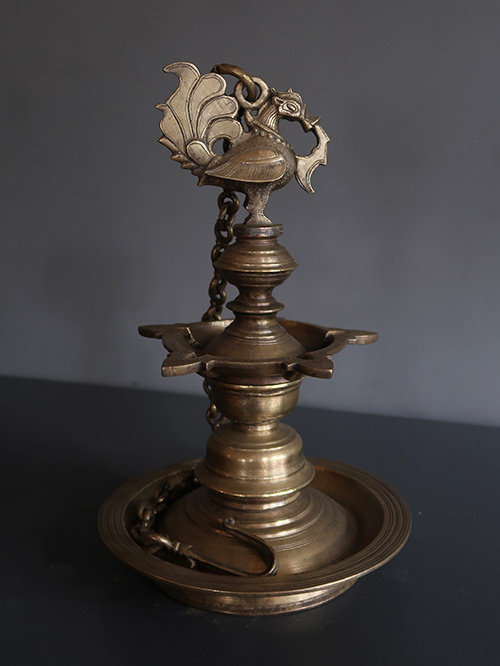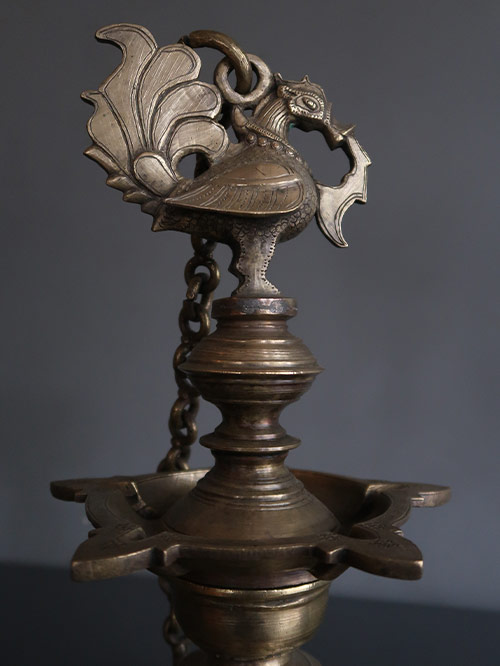-


Kerala
Brass Alloy
A fine two-tiered temple lamp with a Hamsa (goose) final. The upper circular reservoir with five lotus petal shaped spouts in each of which a wick would be placed.
The Hamsa is a familiar motif in Indian art, literature, sculpture and textiles. It is an aquatic bird that resembles a goose or a swan. It is reputed to eat pearls and to be able to separate milk from water. The Hamsa is seen as a symbol of purity, detachment, divine knowledge, cosmic breath (prana) and the highest spiritual accomplishment.
Hanging lamps, sometimes called chain lamps, may have originated from as far afield as Greece or Rome, entering South Asia from the early ports of Arikamedu and Mammalapuram (both near present day Chennai). Used primarily in a temple context, the chain lamp cast its light broadly, and in so doing extended spiritual agency. Much like other lamp types, it served as a backdrop to images placed before it on the altar. A group of hanging temple lamps within the temple would have generated a tremendous play of light and shadows over walls, ceilings and floors.
Size(cms): 35 (H w/o Chain) x 21.5 (Diameter), 94 (H with Chain)
Size(inches): 13.75 (H w/0 Chain ) x 8.5 (Diameter), 37 (H with Chain)
-


Kerala
Brass Alloy
A fine five tiered Kerala temple lamp with a hamsa ( goose) final and a turtle (Kurma) base. These Kerala temple lamps are called Ammai Villaku – the turtle symbolising the primordial support of the universe of luminaries.
The lamp is conceived as the vehicle through which the divine can be accessed. Lamps are used in rituals within the domestic realm, as well as religious or temple settings, in order to propitiate the gods. There are innumerable ways in which lamps are employed depending on the specific location and society. Within the more private setting of the home, the lamp is used in Hindu practice to activate the presence of the deity with the arati ritual – the moving of a lamp, held on a plate, in a circular fashion in front of an image. This allows the devotee to acknowledge and to accept blessings.
While the form of the lamp changes, depending on the religious context in which it is made and used, it is the lamp’s “carrying” of light that is significant, whether it takes the form of a goddess, an animal, or a tree. The preservation of light signifies the deity’s favour and presence. An intersection of the human and the divine is thus central to the crafting of the lamps and incense burners under consideration.
Size (cms): 89.5(H) x 20(W) x 17(D)
Size (inches): 35(H) x 8(W) x 6.5(D)





